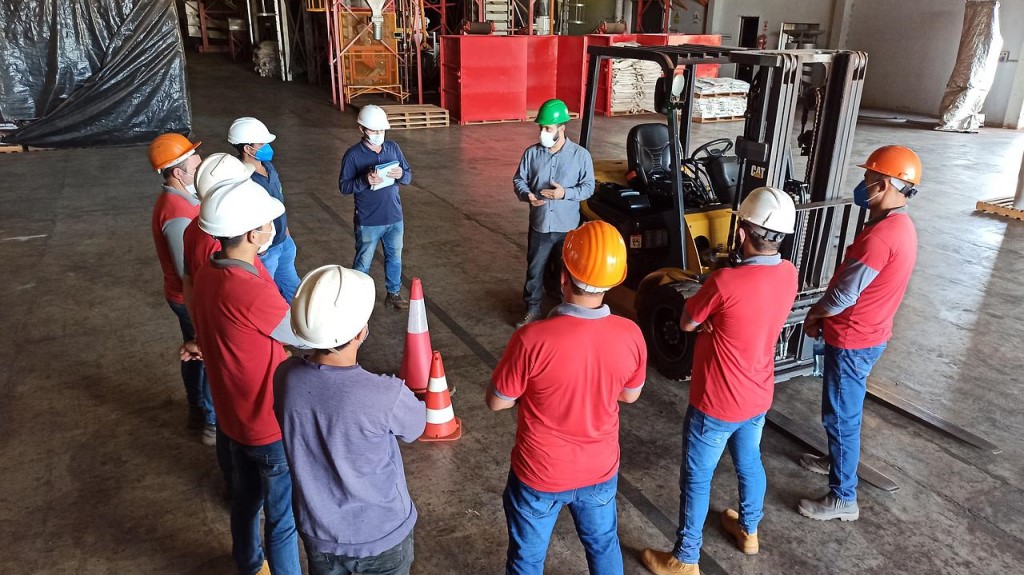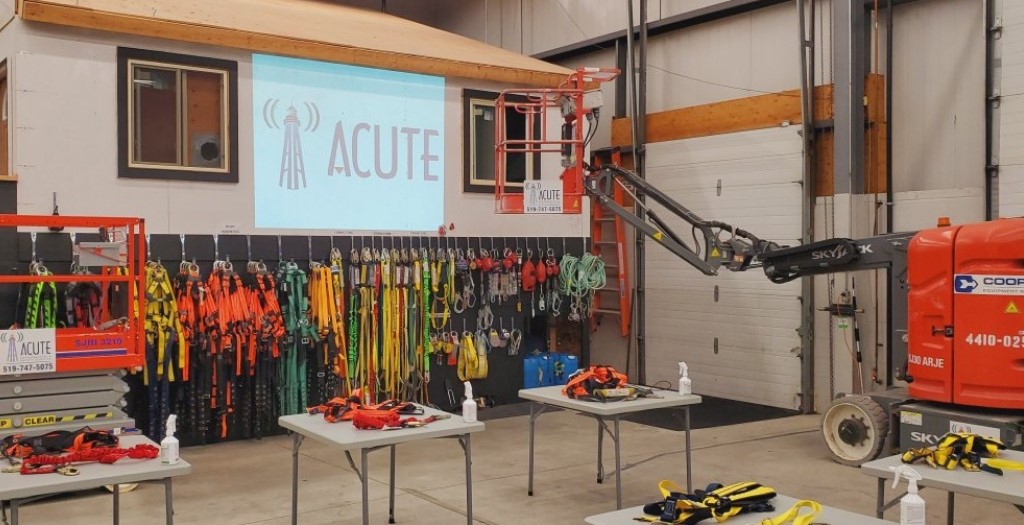Addressing safety concerns in the workplace is paramount, especially in trades where physical risks are inherent. Knowing when and how to articulate these concerns through a safety complaint letter can make a significant impact on creating a safe and inclusive work environment.
In this blog post, we will delve into specific scenarios warranting the filing of a safety complaint letter and provide a comprehensive guide on why and how to write one.
Click on each corresponding link to jump ahead:
- When Should You Write a Safety Complaint Letter?
- Why Should You Write a Safety Complaint Letter?
- How do You Write a Safety Complaint Letter?
Acute Safety is your go-to resource for all things safety training. Simply contact us today for anything safety-related.
Key Takeaways
- Safety complaint letters are essential when facing issues like negligence, unsafe work conditions, inadequate staffing, insufficient training, discrimination, retaliation, or regulatory violations.
- Writing a safety complaint letter protects workers by documenting hazards, holding employers accountable, and ensuring corrective action is taken.
- Complaint letters also support compliance with workplace safety laws and industry regulations, reducing legal and financial risks for employers.
- An effective letter should be professional, clear, and detailed, outlining the issue, its impact, and suggested solutions while keeping the focus on safety.
- Following proper channels and keeping records increases the likelihood of resolution and protects employees from retaliation.
- A strong safety culture begins with communication—reporting issues contributes to safer, more inclusive, and more productive workplaces.
Safety Complaint Letters
1. When Should You Write a Safety Complaint Letter?
Here is an example of a safety complaint letter:
Are you experiencing negligence or harassment?
Here are some specific scenarios where filing a complaint may be warranted:
A) Negligence
Definition: Negligence refers to the failure to exercise the care and attention that a reasonably prudent person or entity would under similar circumstances. In trade work, negligence could involve:
- A lack of attention to safety protocols
- Failure to provide the necessary equipment
- Inadequate supervision leads to preventable accidents
Example: Failure to provide proper safety gear for workers involved in construction, leading to an increased risk of injury.
Resolution: Ensure all workers have the necessary safety equipment, and implement regular safety training programs. Establish a system for reporting and addressing safety concerns promptly.
B) Unsafe Work Conditions
Definition: Unsafe work conditions refer to situations or environments within the workplace that pose a threat to the health and safety of employees. In the trades, this can include:
- Poorly maintained equipment
- Lack of personal protective equipment (PPE)
- Exposure to hazardous materials
- Insufficient safety measures in place
Example: Operating heavy machinery without proper maintenance, posing a threat to both the equipment and the workers.
Resolution: Conduct regular equipment inspections and maintenance. Implement clear safety protocols and provide training on proper equipment usage. Encourage workers to report any unsafe conditions immediately.
C) Inadequate Staffing

Inadequate staffing can lead to overwork and extreme burnout.
Definition: Inadequate staffing occurs when there aren’t enough workers to perform tasks efficiently and safely. In the trades, this can lead to:
- Fatigue
- Increased stress
- Higher likelihood of accidents
Example: A construction site lacks sufficient workers to handle the workload, leading to fatigue and an increased risk of accidents.
Resolution: Assess staffing needs based on the scope of the project. Ensure that workers’ schedules allow for adequate rest to prevent fatigue-related accidents. Consider hiring additional staff or redistributing tasks to balance the workload. This will eliminate safety complaint letters regarding inadequate staffing.
D) Insufficient Training
Definition: Insufficient training means that employees haven’t received the necessary knowledge and skills to perform their job tasks safely and effectively. In the trades, this can involve inadequate training on:
- The use of tools
- Machinery
- Handling hazardous materials
Example: Employees not properly trained to handle hazardous materials, posing a risk to themselves and others on the construction site.
Resolution: Implement comprehensive training programs for all employees, especially those handling hazardous materials. Regularly update training to align with industry standards. Provide ongoing education to ensure workers are aware of and adhere to safety protocols.
E) Discrimination and Harassment
Definition: Discrimination and harassment involve unfair treatment based on characteristics such as race, gender, ethnicity, or other protected factors. In the trades industry, this could manifest as discriminatory practices in:
- Hiring
- Promotions
- Unequal treatment on the job
Harassment may include:
- Unwelcome comments
- Gestures
- Actions that create a hostile work environment
Example: Inappropriate comments or actions based on race, gender, or other protected characteristics within the workplace.
Resolution: Establish a clear anti-discrimination and anti-harassment policy. Provide training to all employees on respectful workplace behaviour through workplace violence and harassment training. Encourage the reporting of incidents and establish a confidential process for investigation. Take prompt and appropriate disciplinary action against perpetrators.
F) Retaliation for Reporting

Retaliation for reporting is unacceptable.
Definition: Retaliation for reporting occurs when an employee faces negative consequences after reporting workplace concerns or violations, such as:
- Demotion
- Termination
- Harassment
This could dissuade employees from reporting safety issues, hindering the overall safety culture of the workplace.
Example: An employee faces demotion or termination after reporting safety violations to the management.
Resolution: Communicate a non-retaliation policy and provide avenues for anonymous reporting. Investigate any reports of retaliation thoroughly and take corrective action. Foster a culture that encourages open communication via safety complaint letters and values employees’ safety concerns.
G) Violation of Regulations
Definition: Violation of regulations refers to the breach of established rules, laws, or industry standards governing workplace safety and conduct. In various trades, this can involve disregarding:
- Occupational Safety and Health Administration (OSHA) regulations
- Local building codes
- Other relevant guidelines designed to ensure a safe working environment
Example: Failure to adhere to OSHA regulations regarding the safe use of scaffolding or fall protection measures.
Resolution: Stay informed about and comply with industry regulations. Conduct regular audits to ensure compliance. Establish a system for reporting violations internally and externally to relevant regulatory bodies. Implement corrective actions promptly.
Resolving these issues often requires a combination of
- Proactive measures
- Ongoing training
- Effective communication
- Commitment to a safe and inclusive workplace culture
Regularly reviewing and updating policies, conducting audits, and addressing concerns promptly contribute to a safer and more harmonious work environment.
2. Why Should You Write a Safety Complaint Letter?

Safety complaint letters promote workplace safety and legal compliance.
Writing a safety complaint letter can be necessary for several reasons, especially in the context of trades work where workplace safety is of paramount importance. Here are some compelling reasons to write a safety complaint letter:
A) Protection of Personal Safety
Writing a safety complaint letter allows you to express concerns about:
- Unsafe work conditions
- Inadequate training
- Other issues that directly impact your safety and the safety of your colleagues
Expressing safety concerns to your supervisors is the first step to making a change.
B) Legal Compliance
If you believe that your workplace is not adhering to safety regulations and industry standards, filing a complaint is a way to ensure that the company is made aware of potential legal liabilities and obligations.
C) Preventing Accidents and Injuries

If you work at heights, you understand the need to prevent accidents.
A safety complaint letter serves as a proactive measure to address:
- Potential hazards
- Negligence
- Insufficient training
In return, reducing the risk of accidents and injuries in the workplace.
D) Promoting a Culture of Safety
By reporting safety concerns, you contribute to the creation of a workplace culture that prioritizes safety. This encourages employers to take proactive measures to address issues and establish a safer working environment for everyone.
E) Ensuring Accountability
Filing a complaint holds the company accountable for addressing and rectifying safety issues. It creates a record of your concerns and actions, which may be crucial if legal or regulatory intervention becomes necessary.
F) Encouraging Corrective Action

A safety complaint letter can encourage corrective action such as the proper use of PPE.
A well-documented safety complaint can serve as a catalyst for management to take corrective action. It provides specific details about the issues at hand and may prompt the implementation of new safety measures or training programs.
G) Protecting Against Retaliation
If you suspect that reporting safety concerns may lead to retaliation, putting your concerns in writing provides documentation that may be useful if you need to prove retaliation occurred.
H) Legal and Ethical Responsibility
Companies have a legal and ethical responsibility to provide a safe and healthy work environment. A safety complaint letter highlights any deviations from these responsibilities and emphasizes the importance of compliance.
When writing a safety complaint letter, it’s essential to be:
- Clear
- Specific
- Professional
Include details about the safety concerns, the potential risks involved, and any supporting evidence.
Submit the letter through appropriate channels within your organization, following the established reporting procedures. If internal channels do not resolve the issue, you may consider reporting to external regulatory bodies, depending on the severity of the concerns.
3. How do You Write a Safety Complaint Letter?

When writing a safety complaint letter, start by using a professional format.
Here’s a step-by-step guide on how to write an effective safety complaint letter:
Step 1: Use a Professional Format
Your Information:
Include your:
- Full name
- Job title
- Contact information
This helps establish your identity and ensures that the recipient can follow up with you.
Date:
Add the date to document when the letter is written.
Recipient’s Information:
Include the name, job title, and address of the person or department responsible for addressing safety concerns.
Step 2: Write a Clear and Concise Subject Line
Use a subject line that clearly indicates the nature of your letter, such as “Formal Safety Complaint” or “Concerns Regarding Workplace Safety.”
Step 3: Salutation
Use a professional salutation. If you know the recipient’s name, address them directly (e.g., “Dear Mr. Smith”). If not, use a general salutation (e.g., “To Whom It May Concern”).
Step 4: Opening Paragraph
Clearly state the purpose of your letter. Afterwards, mention your role within the company and your intention to address safety concerns.
Step 5: Provide Details

Take some time to remember the specific details of the event.
In subsequent paragraphs, provide specific details about the safety concerns. Include:
- Descriptions of unsafe conditions or practices.
- Instances of inadequate training or staffing.
- Supporting evidence, if available (photos, documents, etc.).
This will ensure the person reading your letter has a complete understanding.
Step 6: Explain the Impact
Clearly outline how the safety issues can impact the:
- Employees
- Company
- Companies operations
Emphasize the potential risks, accidents, or injuries associated with the identified problems.
Step 7: Suggest Solutions
Offer constructive suggestions or recommendations for addressing the safety concerns. This demonstrates your commitment to finding solutions rather than just highlighting problems.
Step 8: Request Action
Clearly state what action you would like the recipient to take. Specify a reasonable timeframe for addressing the concerns.
Step 9: Closing

Finish off your safety complaint letter with a respectful goodbye.
Express appreciation for the recipient’s attention to the matter. Provide your contact information again, indicating your willingness to discuss the concerns further. Then, use a formal closing (e.g., “Sincerely” or “Yours faithfully”).
Step 10: Proofread
Before sending the letter, carefully proofread it to ensure:
- Clarity
- Accuracy
- Professionalism
You do not want to submit a letter that lacks clarity or accuracy, this will diminish the likelihood that affirmative action is taken.
Step 11: Delivery
Submit the letter through appropriate channels within your organization, following established reporting procedures. Also, if necessary, retain a copy of the letter for your records.
Here is a tip! keep the tone of the letter professional and focused on the safety concerns. A well-structured and clear letter increases the likelihood of a prompt and effective response from the relevant parties.
Remember that in most cases, the desired outcome when submitting a safety complaint letter is to prompt a timely and effective response from the relevant parties, leading to a resolution of the identified safety concern(s).
Need Safety Training? Rely on Acute Safety

If you have recently received a safety complaint letter or you are concerned that your workplace is not safety complaint, book a course with ACUTE. Here are some of the benefits of working with ACUTE:
- Open Door Instructor-Student Partnership – ACUTE’s training services emphasize client participation, staff foster relationships with clients and serve as a touchstone for advice anytime moving forward.
- Serving Your Team and Industry – With a vast array of clients in manufacturing, construction, health, academic, and government sectors, ACUTE brings the best safety practices from across the spectrum to your workplace.
- 100 Years Combined Experience – ACUTE provides comprehensive health and safety training, on-site safety services, and consulting services. With over 100 years of combined experience, our company staff offers more than theoretical or abstract ideas. ACUTE offers solutions!
- Track Record of Success – ACUTE is rated 4.9/5 stars on Google reviews, demonstrating our commitment to our clients, our quality, and our passion for training.
It is one thing to understand what HSE is and another to know how to conduct an HSE presentation. Contact Acute Environmental today to learn more about health, safety, and the environment.
What Our Customers Are Saying…
We were referred to ACUTE on behalf of our employer for an n95 mask fitting – the staff here are professional, personable, and informative.
I’d come back here for any safety-related training in a heartbeat.
Acute has been a staple in supporting my companies over the years and have always delivered quality and dependable service. Training programs are top shelf and a great facility for practical application. couldn’t recommend them more. keep up the great work folks.
Outstanding service provided by Acute, right from the customer support end, right through to the delivery of the session. Always professional, quick to respond, and always delivering services that exceed my expectations. Acute has an amazing team that is always helping us achieve better health and safety performance. So are grateful to have such a tremendous resource in Acute!
Hours of Operation and Contact Information:
Monday-Friday: 8:00 AM – 5:00 PM
Saturday-Sunday: Closed
Phone: (519) 747-5075
Fax: (519) 747-4608
Email: info@acuteservices.com


